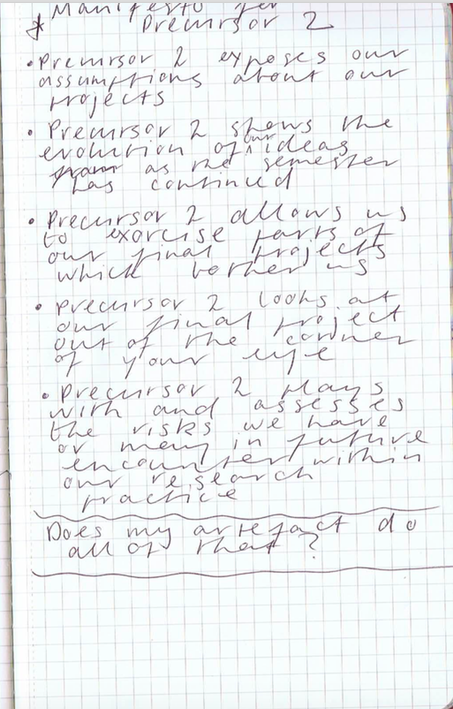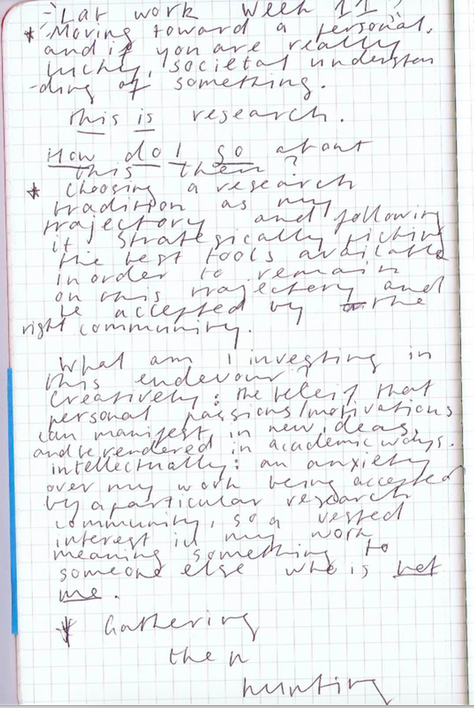Ana vs Mia: speculating
This one is a bit of a lassoing of ideas, bear with me as I try to explain pro-ana’s exclusion of the “mia” via menstrual blood. Not a post for the closed of mind.
A cursory scroll through the thinspiration hashtag feed reveals the actual definition of the eating disordered experience more broadly a matter of internal contest in pro-ana. Alongside the figure of “Ana”, “Mia” also features as a personification of an eating disorder, namely the bulimic condition. However the relationship between “Ana” and “Mia” is seen to be a hostile one, with “Mias” (users purporting to be bulimic) often dealt with in languages of exclusion within pro-ana. Bulimia is seen as a last resort, something seized upon in the event of a binge and as such associated with relapse, guilt and indulgence.
To return to dominant discourse work performed in thinspiration, I locate a fear of the abject position in the pro-ana movement’s excessive anxiety toward those sitting on the borderline of ‘legitimate’ eating disorder suffering. The pro-ana movement unites in the fight against disorder by defining the bulimic condition as taboo in excluding “mias” (bulimics) in virtual spaces where “ana represents an ED ideal” (Giles 468).
The movement under attack has little tolerance for the ambiguity and anomaly present in the taboo bulimic state, which is assumed to be an in between disorder taken up by those unequal to the task of total self starvation. The community perceives the “mia” with a sense of abject disgust at their traversal of carefully crafted boundaries and definitions of the eating disordered experience, which are literally inscribed in manifesto form across many sites. Positioned in structuralist terms, pro-ana is an inherently untidy system whose boundaries are vulnerable at best, and this is what necessitates a response akin to Douglas’s formulation of taboo as “a spontaneous coding practice which sets up a vocabulary of spatial limits and physical and verbal signals to hedge around vulnerable relations” (Purity and Danger xiii).
We may speculate that the abject disgust at the “mia” condition stems from a fear of the marginal state he or she inhabits, as someone hovering at the borders of the accepted ED experience. The bulimic condition itself is often less physically inscribed upon the body, as sufferers can maintain a normal body shape while practicing regular binges and purges. Thus, the bulimic body seems to oscillate between notions of health and unhealth, suffering and not suffering, starving and not starving. To follow Douglas’s line of argument, it would be the “mia”s transgression of a fixed state which is more offensive than their condition alone. Within pro-ana the mia is treated almost as a Lele tribeswoman, who while pregnant, must take care not to upset the cycles of nature as a vessel for a foetus which is alive and not alive. Like the pregnant mother, the mia is feared and excluded due to the marginal state it inhabits or provides a bodily vessel for. The same comparison may be drawn between the mia and even the visceral fear many cultures within Douglas’s study appear to show at the concept of menstrual blood. Douglas uses the example of Maori tribes who fear menstrual blood because “if it had not flowed it would have become a person, so it has the impossible status of a dead person that has never lived” (93). The marginal status of menstrual blood is what causes disgust for the Maoris, not the substance itself and similarly the in between condition of the “mia” who belongs to both sides of the eating disorder community, as “ana” in her starvation and compulsive eater in her binges, is perhaps what causes discomfort.
Work cited
Douglas, Mary. Purity and Danger : An Analysis of Concepts of Pollution and Taboo. London: Routledge and Kegan Paul, 1978. Print.
Giles, David. “Constructing Identities in Cyberspace: The Case of Eating Disorders.” British Journal of Social Psychology 45.3 (2006): 463-77. Print

